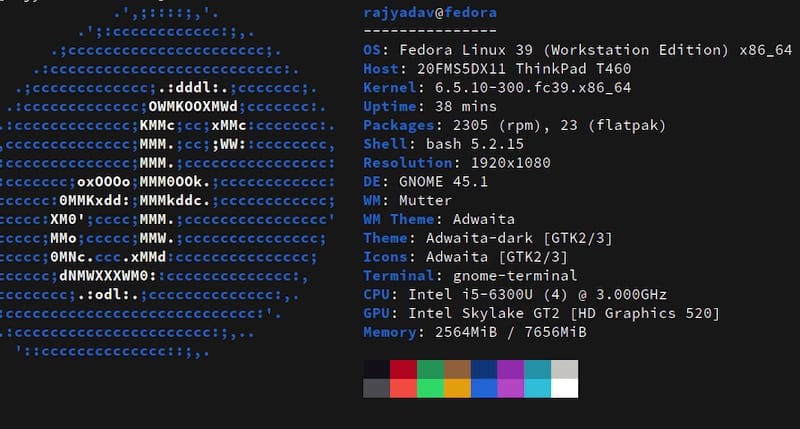How To Install Neofetch on Fedora 39

In this tutorial, we will show you how to install Neofetch on Fedora 39. In the dynamic world of Linux, system administrators and enthusiasts often seek tools that provide quick access to essential system information. One such tool is Neofetch, a command-line utility that displays detailed information about your Linux system.
This article assumes you have at least basic knowledge of Linux, know how to use the shell, and most importantly, you host your site on your own VPS. The installation is quite simple and assumes you are running in the root account, if not you may need to add ‘sudo‘ to the commands to get root privileges. I will show you the step-by-step installation of the Neofetch on a Fedora 39.
Prerequisites
Before diving into the installation process, let’s ensure that you have everything you need:
- A server running one of the following operating systems: Fedora 39.
- It’s recommended that you use a fresh OS install to prevent any potential issues.
- SSH access to the server (or just open Terminal if you’re on a desktop).
- You’ll need an active internet connection to download Neofetch and its dependencies.
- A
non-root sudo useror access to theroot user. We recommend acting as anon-root sudo user, however, as you can harm your system if you’re not careful when acting as the root.
Install Neofetch on Fedora 39
Step 1. To ensure your system is up to date, use the ‘dnf‘ package manager. Run the following command:
sudo dnf clean all sudo dnf update
Step 2. Installing Dependencies.
Neofetch relies on specific dependencies to function correctly. Although Fedora usually includes most of them by default, it’s a good practice to double-check. To install or update these dependencies, use ‘dnf‘:
sudo dnf install git
This command installs ‘git,’ a version control system, which is essential for the installation process.
Step 3. Installing Neofetch on Fedora 39.
Neofetch is an open-source project hosted on GitHub. We’ll clone the repository to your system:
git clone https://github.com/dylanaraps/neofetch.git
Navigate to the Neofetch directory:
cd neofetch
Build and install Neofetch:
sudo make install
Step 4. Accessing Neofetch on Fedora.
With Neofetch successfully installed, it’s time to test it. Open your terminal and simply type:
neofetch

Step 5. Troubleshooting.
Common Issues and Solutions
While installing Neofetch, you might encounter a few common issues. Here are some solutions:
-
No Update for Fedora 39:
If your system reports that there are no updates available, it means your Fedora 39 system is already up to date. You can proceed with the installation.
- Dependency Issues:
If you encounter dependency problems, make sure you have enabled the Fedora repositories and that your system is properly configured to fetch the required packages. You can also manually download and install missing dependencies using ‘dnf.’
- Errors During Installation:
If you encounter errors during the installation process, double-check the commands you’ve entered and the path you’re in. Ensure you have ‘sudo’ privileges and that your internet connection is stable.
Congratulations! You have successfully installed Neofetch. Thanks for using this tutorial for installing the Neofetch on your Fedora 39 system. For additional help or useful information, we recommend you check the official Neofetch website.